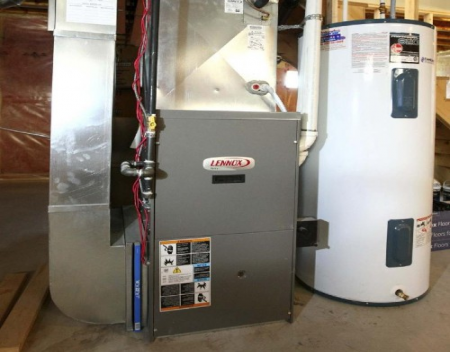Tipos de aparatos
- Aire acondicionado
- Automobile
- Chainsaw
- Circular Saw
- Lavaplatos
- Drills
- Secadora
- Drywall Screw Gun
- Horno
- Gas Fireplace
- Gas Grill
- Gas Patio Heater
- Grinder
- Heat Pump
- Impact Driver
- Impact Wrench
- Microonda
- Nailer
- Orbital Sander
- Calentadores de piscina
- Powerwall
- Distancia
- Refrigerador
- Television
- Lavadora
- Calentador de agua
Marcas de electrodomésticos
- A.O. Smith
- AccuCold
- Admiral Craft
- AGA
- Airrex
- Amana
- Ambiance
- American Range
- American Standard
- American Water Heaters
- Aquacal
- Armstrong
- Asko
- Avanti
- Avenlur
- Azure
- Beko
- Bellfires
- Bertazzoni
- Blackstone
- Blaze
- Blomberg
- BlueStar
- Bosch
- Bradford White
- Bromic
- Bryant
- Cafe
- Calcana
- Capital
- Carrier
- Char-Broil
- Char-Griller
- Chrysler
- Coates
- Coleman
- Comfortmaker
- Commercial Chef
- Continental
- Cosmo
- Cove
- Crown Verity
- Dacor
- Daikin
- Danby
- Danfoss
- DaVinci
- DCS
- Deco
- DeWALT
- Ducane
- Dyna-Glo
- Dyson
- EcoSmart
- Electrolux
- Element4
- Empava
- Equator
- Eurodib
- European Home
- Everdure
- Farberware
- Fhiaba
- FibroPool
- Fire Sense
- Fisher
- FiveStar
- Flare
- Flash Furniture
- Focus
- Ford
- Forno
- Forte
- Frigidaire
- Fulgor Milano
- Gaggenau
- GE
- General Motors
- GlowBrand
- Goodman
- Grundig
- GSW
- Haier
- Hayward
- Heatstar
- Heil
- Hestan
- Hisense
- Hitachi
- Hotpoint
- iio
- Ilve
- Impecca
- Ingignia
- Insignia
- JennAir
- John Wood
- Keeprite
- Kenmore
- Kenyon
- KitchenAid
- Kucht
- La Cornue
- Lennox
- LG
- Liebherr
- Lifetime
- Lion
- Luxaire
- Lynx
- Magic Chef
- Marvel
- Maytag
- McQuay
- MicroFridge
- Midea
- Miele
- Migali
- Monogram
- Montigo
- Mr Heater
- Napoleon
- Navien
- Nexgrill
- Noritz
- Panasonic
- Patio Comforts
- Payne
- Pentair
- Perlick
- PITT
- Premier
- Raypak
- Real Fyre
- Regency
- Reliance
- Rheem
- Rinnai
- Roma
- Ruud
- Saber
- Samsung
- Schwank
- Sharp
- Smeg
- Solas
- Sony
- Spartherm
- Speed Queen
- StaRite
- State Water Heaters
- Stiebel Eltron
- SubZero
- Summerset
- Summit
- SunGlo
- SunPak
- Sunpentown
- SunStar
- Superiore
- Takagi
- TCL
- TEC
- Tempstar
- Tesla
- Thermador
- Thor Kitchen
- Toshiba
- Town and Country
- Toyota
- Traeger
- Trane
- Twin Eagles
- U-Line
- Unique
- Vaillant Group
- Valor
- Verona
- Victory
- Viessmann
- Viking
- Vizio
- Weber
- Westinghouse
- Whirlpool
- Whynter
- York
- ZLINE
Categorías de artículos
- Aire Acondicionado
- Cuidado de los electrodomesticos
- Appliance News
- Dishwasher News
- Maquinas de secado
- Hornos
- Gas Fireplaces
- Microondas
- Calentadores de piscina
- Frigorificos
- Estufas - Cocinas
- Trucos y consejos
- Lavadoras
- Water Heaters
Más artículos
What Would Cause a Furnace to Overheat?

Your furnace keeps turning off and that burning smell isn’t going away. Now it’s cold outside and your house just isn’t getting warm. Unfortunately, these are signs that your furnace is overheating and unable to function as it should.
Never ignore an overheating furnace! The problem won’t go away on its own, and continuing use of your furnace can cause significant and expensive damage to your system.
Recognizing an Overheated Furnace.
An overheating furnace loses some function and may stop working completely. You’ll probably notice something is wrong when your furnace overheats, but you may not know exactly what’s happening. Watch for the following signs that indicate your furnace is overheating.
A constant burning aroma.
A strange humming noise.
The furnace turns off before finishing a cycle.
The humming sound is a sign that your motor is working too hard. Always turn your furnace off if you hear this noise. When the furnace turns off too early, it means that the heat exchanger is at a dangerous temperature and the high-limit switch has turned off the system.
Restricted Airflow.
One of the most common and simple causes of an overheating furnace is poor air circulation. The internal components of your furnace can get too hot when there isn’t good airflow. This usually happens when you forget to change your air filter regularly.
The air filter traps dust and other contaminants that can clog your furnace’s ventilation system. As the filter and ventilation system becomes clogged, airflow is impeded, which makes the furnace work harder and get hotter.
Your furnace’s air filter should be inspected and replaced frequently throughout the year. Here’s how often you should change your filter.
1-inch to two-inch filters: every 3 months.
4-inch filters: every 6 months.
5-inch filters: every 12 months.
Your filter should be changed sooner than recommended if you live with many people or have pets.
Dirty Internal Components.
When the air filter gets clogged, it allows dust and contaminants to cover the components of your furnace. The coil in your furnace can become covered with grime, preventing the heat exchanger from moving heat. The blower motor is particularly sensitive to dust and dirt; when it gets too dirty, it can’t ventilate itself and may overheat.
Short Cycling.
Short cycling happens when the furnace turns on and off quickly or turns off prematurely in the heating cycle. Short cycling stresses your furnace motors and prevents your home from warming up. Short cycling can be caused by a few issues. It might be caused by.
A furnace that is too large for your house.
A malfunctioning thermostat.
Overheating.
In the case of overheating, short cycling occurs because the furnace is turning itself off to prevent damage to the motors. As soon as the furnace cools off a bit, it can turn back on but quickly overheat again.
Mechanical Failure.
Failure of mechanical components in your system can cause your furnace to overheat. Electrical wiring and the fan blower in your furnace are subjected to a great deal of stress. Your furnace could overheat due to a short circuit or inadequate circulation.
Scheduling regular furnace tune-ups is the best way to make sure that the moving parts in your furnace are in good, working order. Regular tune-ups also enable technicians to spot signs of strain and premature wear. Remember that it’s cheaper and safer to repair or replace mechanical components before they fail completely and cause damage to other parts of your furnace.
SOURCE: i-hvac.net

Your furnace keeps turning off and that burning smell isn’t going away. Now it’s cold outside and your house just isn’t getting warm. Unfortunately, these are signs that your furnace is overheating and unable to function as it should.
Never ignore an overheating furnace! The problem won’t go away on its own, and continuing use of your furnace can cause significant and expensive damage to your system.
Recognizing an Overheated Furnace.
An overheating furnace loses some function and may stop working completely. You’ll probably notice something is wrong when your furnace overheats, but you may not know exactly what’s happening. Watch for the following signs that indicate your furnace is overheating.
A constant burning aroma.
A strange humming noise.
The furnace turns off before finishing a cycle.
The humming sound is a sign that your motor is working too hard. Always turn your furnace off if you hear this noise. When the furnace turns off too early, it means that the heat exchanger is at a dangerous temperature and the high-limit switch has turned off the system.
Restricted Airflow.
One of the most common and simple causes of an overheating furnace is poor air circulation. The internal components of your furnace can get too hot when there isn’t good airflow. This usually happens when you forget to change your air filter regularly.
The air filter traps dust and other contaminants that can clog your furnace’s ventilation system. As the filter and ventilation system becomes clogged, airflow is impeded, which makes the furnace work harder and get hotter.
Your furnace’s air filter should be inspected and replaced frequently throughout the year. Here’s how often you should change your filter.
1-inch to two-inch filters: every 3 months.
4-inch filters: every 6 months.
5-inch filters: every 12 months.
Your filter should be changed sooner than recommended if you live with many people or have pets.
Dirty Internal Components.
When the air filter gets clogged, it allows dust and contaminants to cover the components of your furnace. The coil in your furnace can become covered with grime, preventing the heat exchanger from moving heat. The blower motor is particularly sensitive to dust and dirt; when it gets too dirty, it can’t ventilate itself and may overheat.
Short Cycling.
Short cycling happens when the furnace turns on and off quickly or turns off prematurely in the heating cycle. Short cycling stresses your furnace motors and prevents your home from warming up. Short cycling can be caused by a few issues. It might be caused by.
A furnace that is too large for your house.
A malfunctioning thermostat.
Overheating.
In the case of overheating, short cycling occurs because the furnace is turning itself off to prevent damage to the motors. As soon as the furnace cools off a bit, it can turn back on but quickly overheat again.
Mechanical Failure.
Failure of mechanical components in your system can cause your furnace to overheat. Electrical wiring and the fan blower in your furnace are subjected to a great deal of stress. Your furnace could overheat due to a short circuit or inadequate circulation.
Scheduling regular furnace tune-ups is the best way to make sure that the moving parts in your furnace are in good, working order. Regular tune-ups also enable technicians to spot signs of strain and premature wear. Remember that it’s cheaper and safer to repair or replace mechanical components before they fail completely and cause damage to other parts of your furnace.
SOURCE: i-hvac.net




